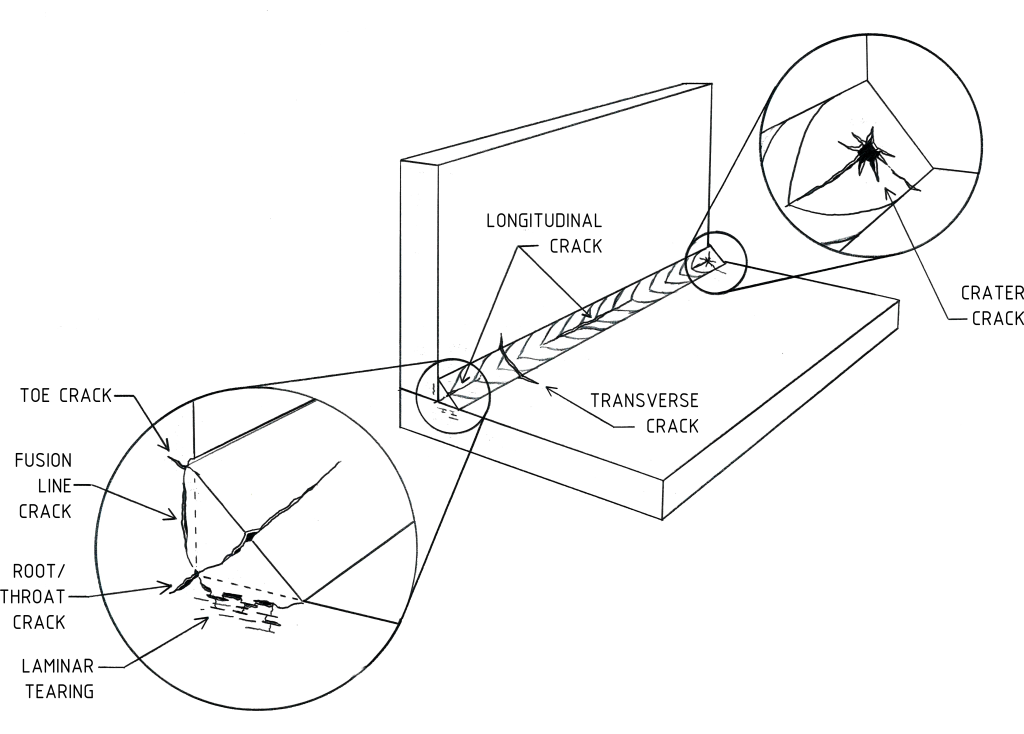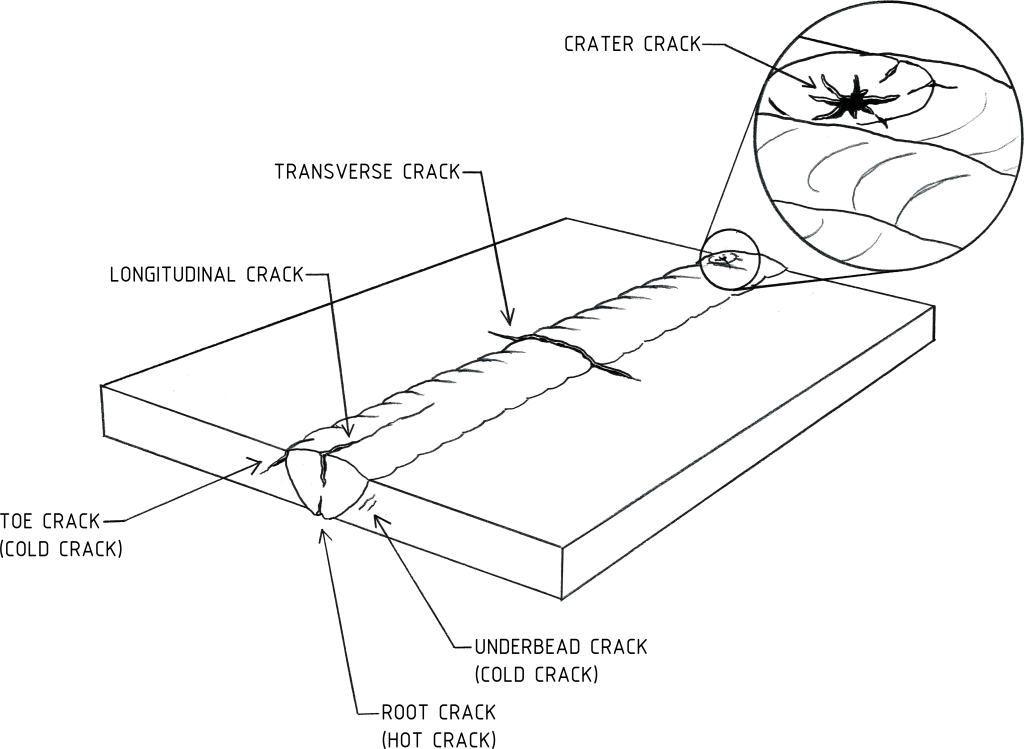46 Cracks
A crack is a fracture-type discontinuity characterized by a sharp tip and a high ratio of both length to width as well as width to opening displacement. Cracks are the most serious discontinuities in weldments and are not permitted per fabrication standards and codes because they create significant stress concentrations at their tips.

Cracks will rarely appear in a straight line. They will nearly always appear along the path of least resistance. Cracks may occur in the weld, the heat affected zone (HAZ), or the base metal when the localized stress exceeds the ultimate strength of the metal.

When cracking is observed during welding, it must be removed before welding continues. Weld metal that is deposited over a crack can result in extension of the crack into newly deposited weld metal.
Classification of Cracks
Cracks are classified as hot cracks or cold cracks, and may be longitudinal or transverse in their orientation.
- A hot crack is a crack formed at temperatures above the completion of solidification. Hot cracks propagate between the grains of metal
- A cold crack is a crack that develops after solidification is complete. Cold cracks propagate both between and through the grains of the metal.
- A longitudinal crack is a crack with its major axis oriented approximately parallel to the weld axis.
- A transverse crack is a crack with its major axis oriented approximately perpendicular to the weld axis.
Types of Cracks
Crack types in welding include:
- Throat cracks
- Crater cracks
- Under bead cracks
- Lamellar tearing
- Toe and root cracks
- Fissures
- Liquid metal embrittlement

